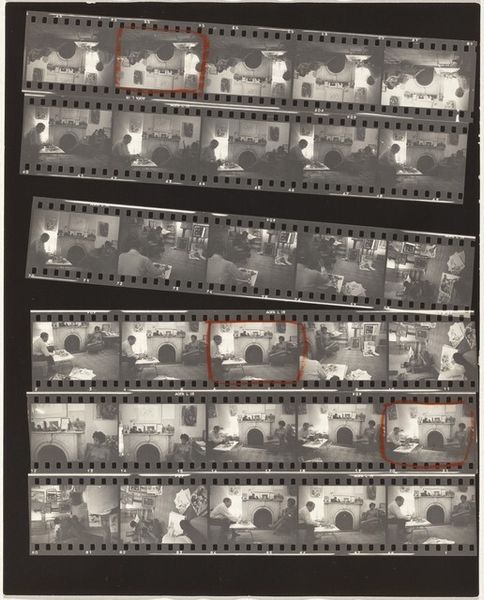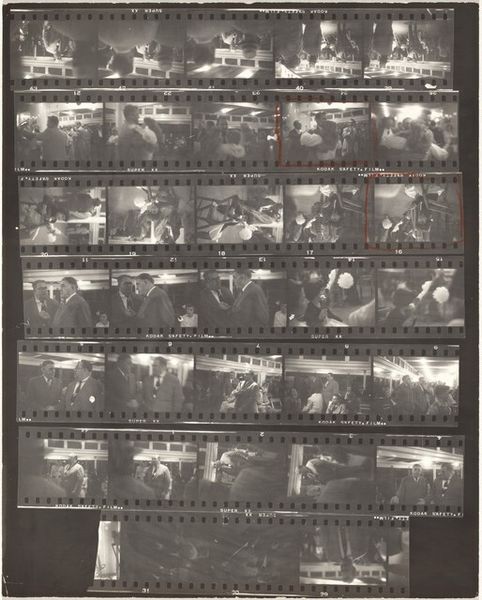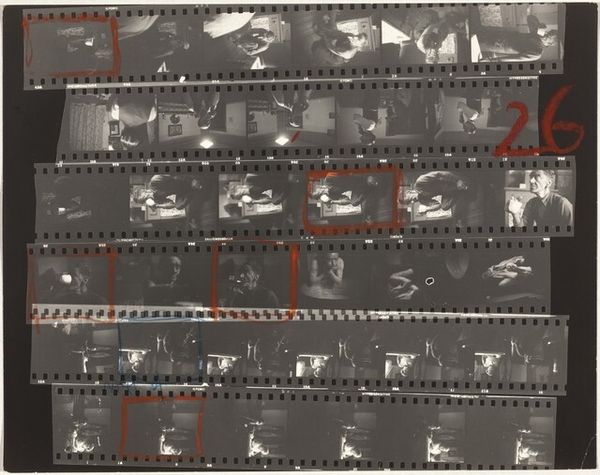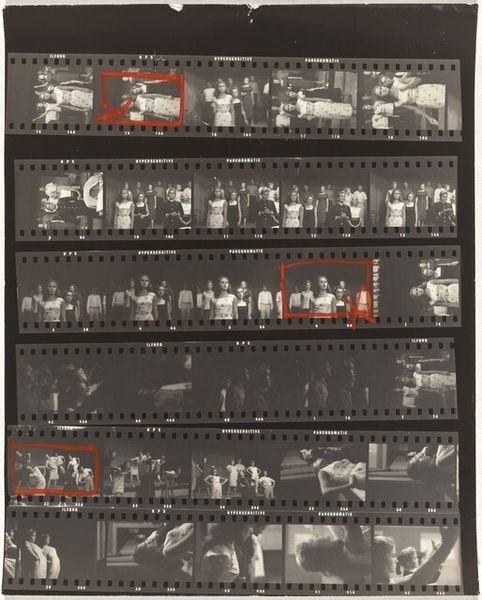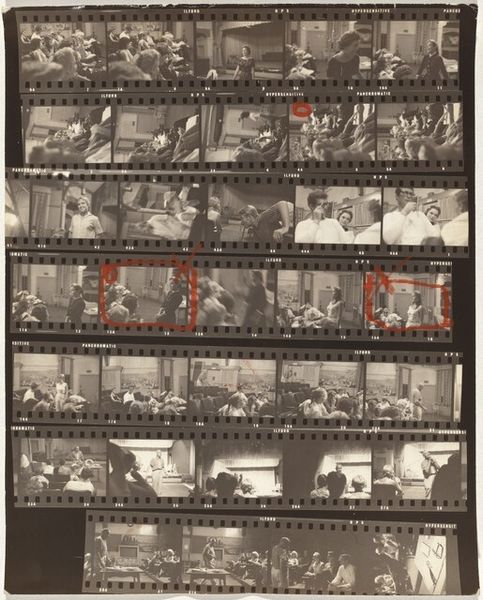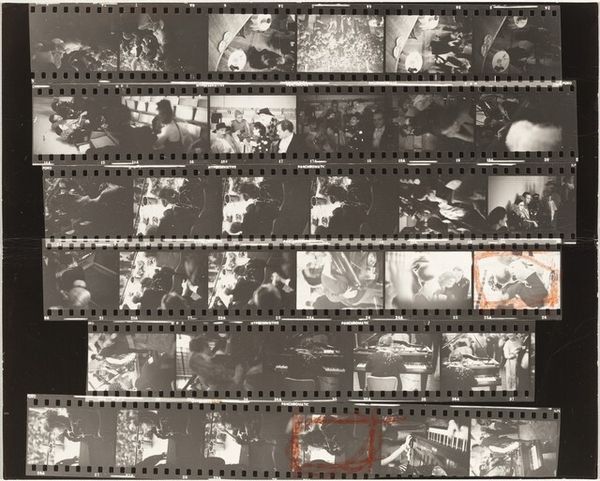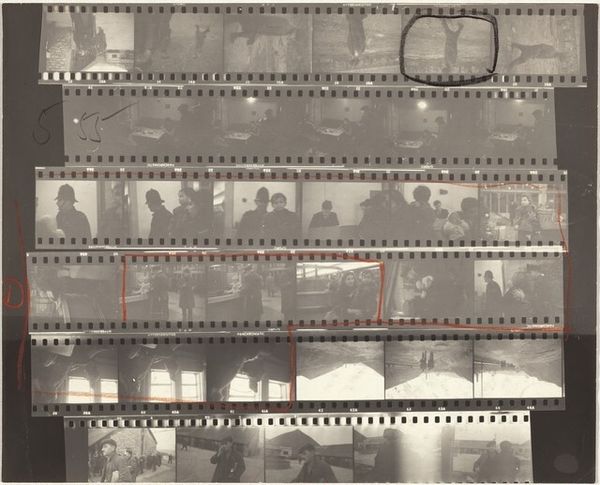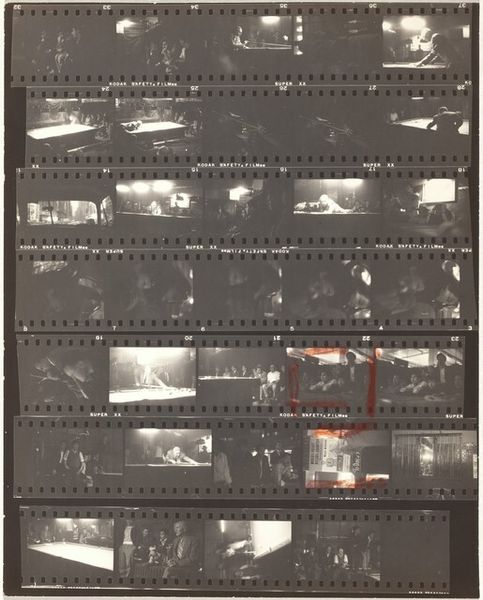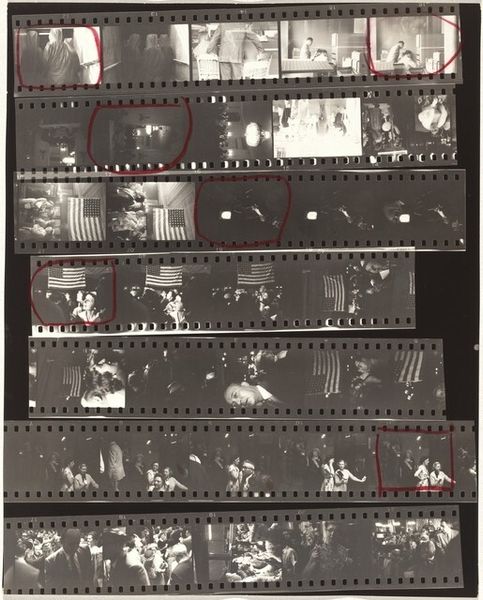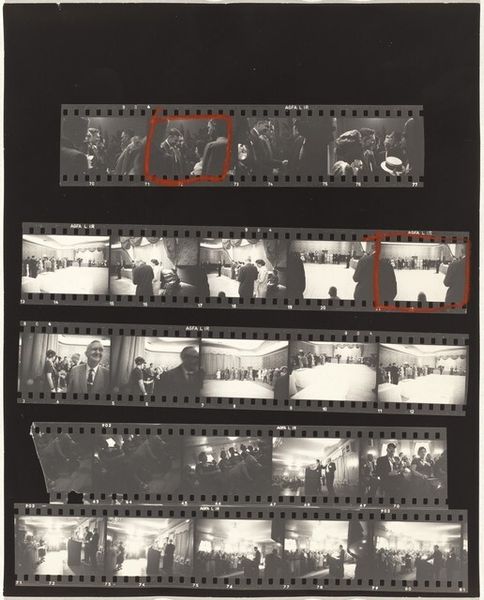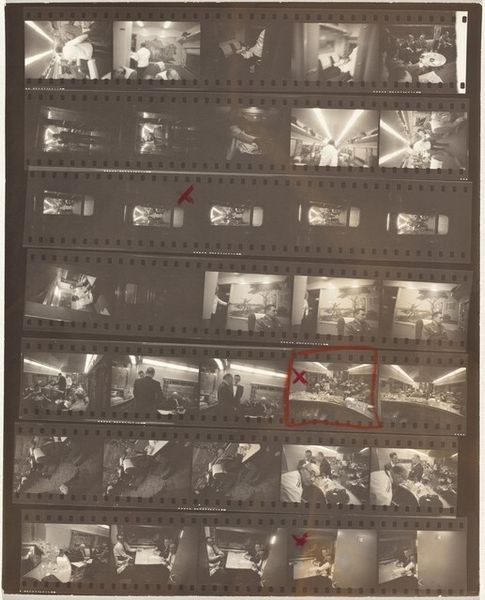
photography, gelatin-silver-print
#
portrait
#
social-realism
#
photography
#
gelatin-silver-print
#
realism
#
monochrome
Dimensions: overall: 20.4 x 25.8 cm (8 1/16 x 10 3/16 in.)
Copyright: National Gallery of Art: CC0 1.0
Curator: Immediately, I see a raw, almost visceral quality. The high contrast, the visible grain...it lends a certain gravity. Editor: Indeed. What we're looking at is Robert Frank's "Wales 24," a gelatin silver print dating back to 1953. It's a contact sheet, offering a behind-the-scenes look at Frank's working process. The red marks and crossings indicate the artist's editing choices. Curator: Exactly! The visible editing process is fascinating. It’s not just about the finished image; it's about the labor, the decision-making inherent in crafting the final narrative. This approach challenges conventional notions of photographic purity. Editor: From a formal perspective, notice how Frank utilizes the grid of the contact sheet to create a unique composition. Each frame acts as a modular unit, contributing to the overall structure, yet distinct enough to be a study. Curator: I'm struck by the social realism within those individual frames. Everyday life, captured candidly. Are those coal miners, perhaps? It speaks volumes about the economic realities and working-class experience of Wales at that time. Editor: It does, doesn't it? But let's consider how light and shadow operate within these confines. The stark contrasts not only lend drama but serve to isolate the subjects, emphasizing a sense of isolation perhaps? Curator: I see it more as a deliberate choice to amplify their presence, to etch their humanity into the photographic record, within very limiting conditions, and despite what was a booming Coal industry that often took advantage of workers. The material conditions practically forced such contrasts. Editor: An interesting interpretation. Ultimately, this contact sheet blurs the line between the artistic process and the finished product, revealing the human hand in photographic storytelling. Curator: Precisely, and it reminds us that even in supposedly objective media, artistic decisions, driven by socio-economic realities, shape the narratives we consume. The means of production are integral to the meaning. Editor: Agreed. This glimpse behind the lens lets us re-evaluate the final output. The selection of the frames invites an awareness of visual decisions.
Comments
No comments
Be the first to comment and join the conversation on the ultimate creative platform.


